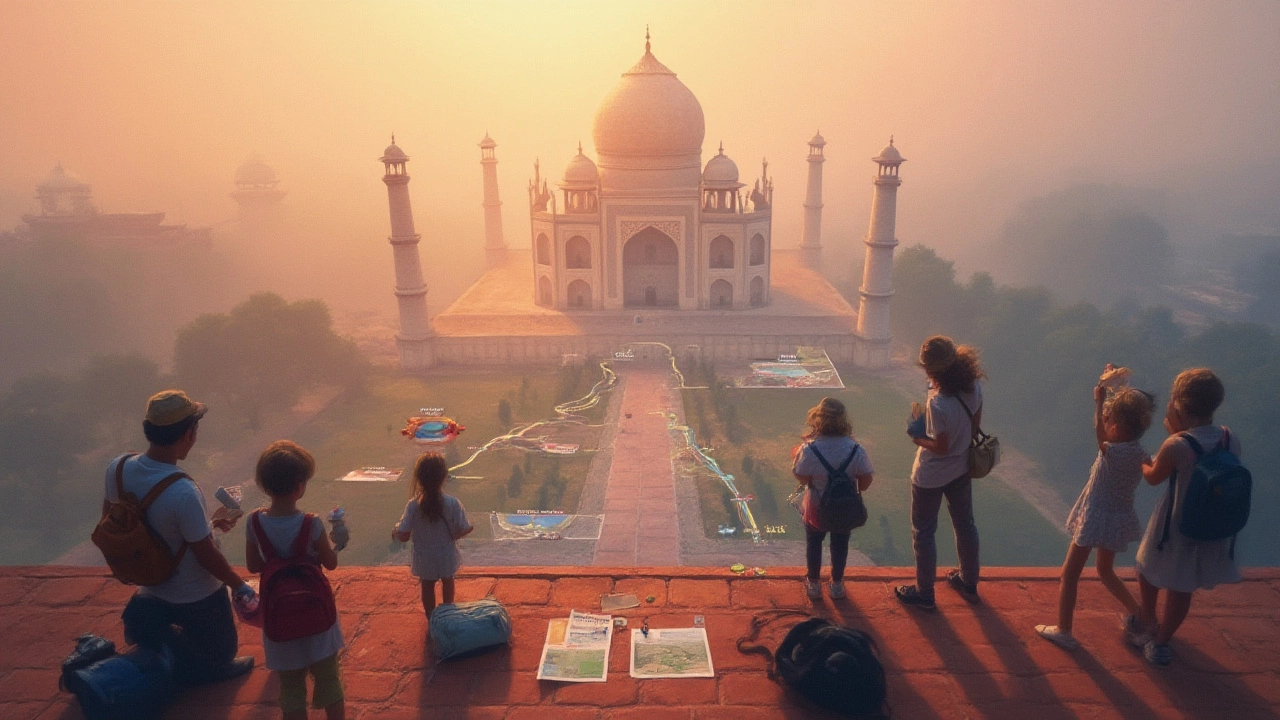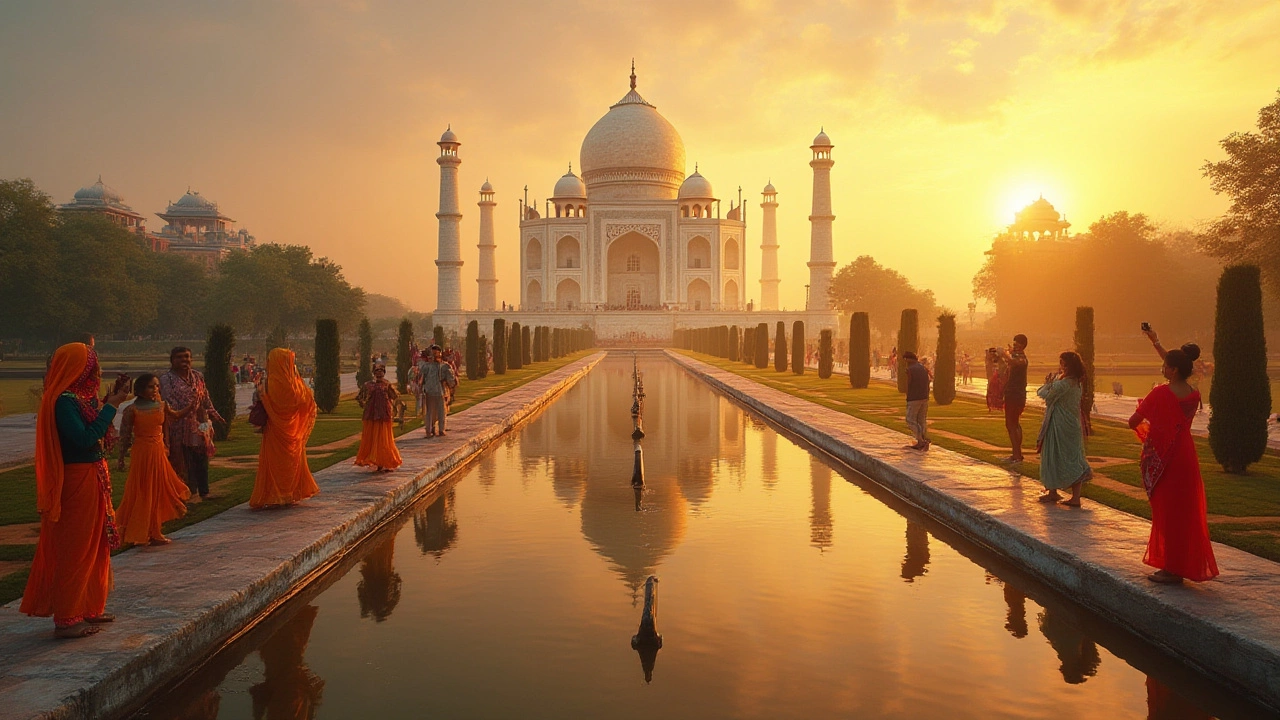Picture this: millions of people flooding through towering archways or brushing past ancient stones, all drawn by the promise of standing somewhere truly legendary. UNESCO's World Heritage list reads like every traveler’s bucket list—think ancient temples, royal tombs, entire old city quarters, and wonders of engineering that have stood the test of centuries. But get this, some sites gather crowds the way honey attracts bees. These heavyweight destinations aren't just a bit famous; they're global magnets, year after year.
Why UNESCO World Heritage Sites Matter
Ever wondered why people go wild for places marked as UNESCO World Heritage Sites? It’s not just a fancy sticker or a marketing ploy. These places are recognized because they're basically the MVPs of culture, nature, or sometimes both. UNESCO uses strict criteria—like being a masterpiece of human creativity, holding massive historical significance, or showing natural beauty that makes you want to pinch yourself. Being named on the list not only brings prestige but also protection—governments are nudged to look after these gems. For travelers, it's often like a glowing review saying, “Yep, this is worth your flight money!” You’ll sometimes hear travelers joking they've got a ‘UNESCO passport’—meaning, they chase these spots whenever they go on holiday.
Not all sites are equal in fame, though. Some are tucked away, sleepily waiting for their moment. Others, like the Great Wall of China or Rome’s Colosseum, handle more flashes from cameras than a pop star on tour. What really makes some World Heritage Sites stand out? Accessibility sure plays a part. If getting somewhere requires three buses, a donkey, and a day of fasting, visitor numbers tend to fizzle. Sites close to or inside big cities have a big advantage—easier flights, easy day-trips, more guides around. Also, the ‘wow’ factor counts: iconic photos, romantic legends, or famous movie scenes crank up their fame. And if you can check a “Seven Wonders of the World” box at the same time, you’ve got yourself a tourist magnate.
The Crown Jewel: Most Visited UNESCO Heritage Site
First, let’s bust a myth—when people say “the most visited UNESCO World Heritage Site,” they often start picturing the Taj Mahal or Machu Picchu. And while those spots draw giants crowds, as of 2025, the most visited site is actually the Historic Centre of Rome (including the Vatican).
According to United Nations World Tourism Organization stats, Rome’s historic core, which covers mind-blowing ancient sites like the Colosseum, Pantheon, and Roman Forum, plus the tiny but mighty Vatican City, draws over 15 million visitors a year. Those numbers even punch through pandemic-era travel slumps, staying higher than any other single UNESCO location worldwide. The combination is magic: jaw-dropping ruins, global religious pilgrimage, pizza within reach, and a chance to snap a Colosseum selfie all in one neighborhood. It’s such a dense cluster of world heritage in one bustling city that you can literally walk from one masterpiece to the next.
The Vatican Museums alone easily attract upward of 6 million visitors each year, with lines to the Sistine Chapel long enough to test your knees (tip: book early morning tickets ahead online, or you’ll be spending part of your trip admiring the backs of other tourists’ heads). The Colosseum isn’t slacking either—its arches, ghost stories, and Gladiator vibes invite about 8 million feet through its gates every year. This all packs in a tight radius, making Rome the busiest world heritage address on the planet.
Let’s see how these numbers compare to other iconic UNESCO sites in a simple table:
| Heritage Site | Country | Annual Visitors |
|---|---|---|
| Rome (incl. Vatican) | Italy | 15+ million |
| Great Wall of China | China | 10 million |
| Taj Mahal | India | 7-8 million |
| Machu Picchu | Peru | 1.5 million (capped) |
| Grand Canyon National Park | USA | 4.7 million |
| Versailles Palace | France | 7 million |
Not every number is public or easy to pin down, but the trend is clear: Rome’s complex, which includes a cluster of priceless landmarks, sits at the very top.

Secrets Behind Rome’s Crowd-Pulling Power
Why does Rome rule? For starters, it’s like a living museum where you can sip espresso between peeking at 2,000-year-old stadiums and jaw-dropping churches. Unlike Machu Picchu (tough mountain trek!) or the remote pyramids of Egypt, Rome is super accessible. Major airlines connect it to nearly every continent, and once you’re in the city, so much can be reached on foot or via short bus rides.
But that hardly covers it. For centuries, Rome has held a magnetic pull for pilgrims and wanderlusters alike. The Vatican is the HQ of the Catholic Church—people flock here not just for art but for spiritual reasons. On Sundays, expect Saint Peter’s Square to turn into a waving sea of flags from every continent. The Colosseum, meanwhile, fires up imaginations with tales of gladiators, massive crowds, and emperors. Add stunning public squares, opulent fountains, and food that could make a grown-adult swoon, and you see why folks keep coming back.
Rome has history you can literally trip over. Ruins pop up in regular parks, and round corners, you’ll come face-to-face with ancient temples now standing beside trendy gelato shops. Films like "Roman Holiday" and scenes from “Angels & Demons” have made the landmarks even more iconic, giving them pop-culture appeal.
Another not-so-secret fact: the city’s walking routes are legendary. You can start the day with coffee near the Spanish Steps, walk past the Trevi Fountain (yep, toss that coin if you want to come back one day), and be surrounded by masterpieces in minutes. Plus, Rome is a city that, even when packed, finds a way to hand you little slices of peace—duck into a quiet neighborhood trattoria or pause on a park bench as church bells ring across the city.
Other UNESCO Giants Challenging the Crowd
Though Rome sits on the throne, a few other spots compete fiercely for the travel spotlight. The Great Wall of China, with its many restored sections close to Beijing, pulls millions who want that windswept photo on the stones weaving over green mountains. Heads up: some parts can be seriously packed, especially the easy-to-reach spots at Badaling and Mutianyu. Go early in the morning or aim for less touristy sections if you want space to breathe.
The Taj Mahal in Agra, India, has its own brand of stardom. Around seven to eight million people—weddings, honeymooners, history buffs—line up each year for the perfect sunrise shot. Fun fact: Fridays it’s closed to most visitors for prayer, so plan accordingly. Security can be strict, so travel light and leave snacks outside.
Machu Picchu in Peru has become a case study for the limits of mass tourism. Authorities now cap daily visitor numbers at around 4,000 (it was allowed higher in the past), to help preserve the site. Permits often sell out months ahead, and strict time slots keep crowds in check. If you dream of hiking the Inca Trail, you’ll need to lock in a spot many months in advance, so planning early isn’t optional—it’s essential!
Europe has its own heavyweights. Versailles Palace in France sees around 7 million a year, with glorious halls decked out in gold and a garden maze perfect for an afternoon escape. The palace hosts special evening events in summer, with fireworks and music echoing across the lawns—an experience that gives a fresh twist on history.
And don’t forget the Grand Canyon, sheer proof that natural wonders hold just as much lure as man-made marvels. With almost 5 million visitors a year, it manages to pull adventure seekers, road-trippers, and geology nerds all the same. Pro tip: March and April get fewer crowds but boast brilliant weather, making for a calmer experience and killer sunrise views.

Travel Tips for Visiting Top UNESCO World Heritage Sites
If you’re planning to check out one of these star attractions, a little know-how goes a long way. First, always check for ticketing changes or entry caps. Many places now use online reservation systems—Machu Picchu, Versailles, the Vatican Museums (especially for the Sistine Chapel), and even the Colosseum encourage pre-booking. This saves frustrating hours in line and avoids total heartbreak if tickets sell out on your day. Rome’s historic core is easy to walk, but good shoes are your best friend, as ancient stones aren’t always foot-friendly.
Try hitting the major sites early in the morning or during the late afternoon lull. Not only will the crowds be lighter, but the light’s perfect for the kind of photos your friends will envy. Want peace? Explore nearby areas just outside the main site—like Trastevere in Rome or the gardens around Versailles—where local flavor is strong and the crowds thin out. If barriers or ropes stop you from getting that perfect selfie, respect the boundaries. Preservation keeps these wonders around for future travelers.
Traveling with kids or older relatives? Rent an audio guide or download an app tour—they’re usually entertaining and keep everyone engaged. Many sites offer skip-the-line tours, which can be worth the splurge on busy days. Remember to pack water, especially for outdoor spots like the Great Wall or Machu Picchu, and bring a hat if you're out under the midday sun.
Lastly, have patience and focus on odd hours. Lunch breaks or less popular months (think winter in Europe or rainy season for Machu Picchu) often see thinner crowds and a different vibe—sometimes moodier, but never dull. These quieter moments let you catch your breath and actually feel the history humming under your feet.
So, when someone asks what is the most visited UNESCO heritage site, you’ve got a rock-solid answer and more—perspective, stories, numbers, and traveler’s wisdom. Whether you make it to Rome’s bustling streets or the misty mountains of Peru, there’s a story waiting for you at every UNESCO site—one you can live firsthand with a bit of curiosity and a good pair of walking shoes.
